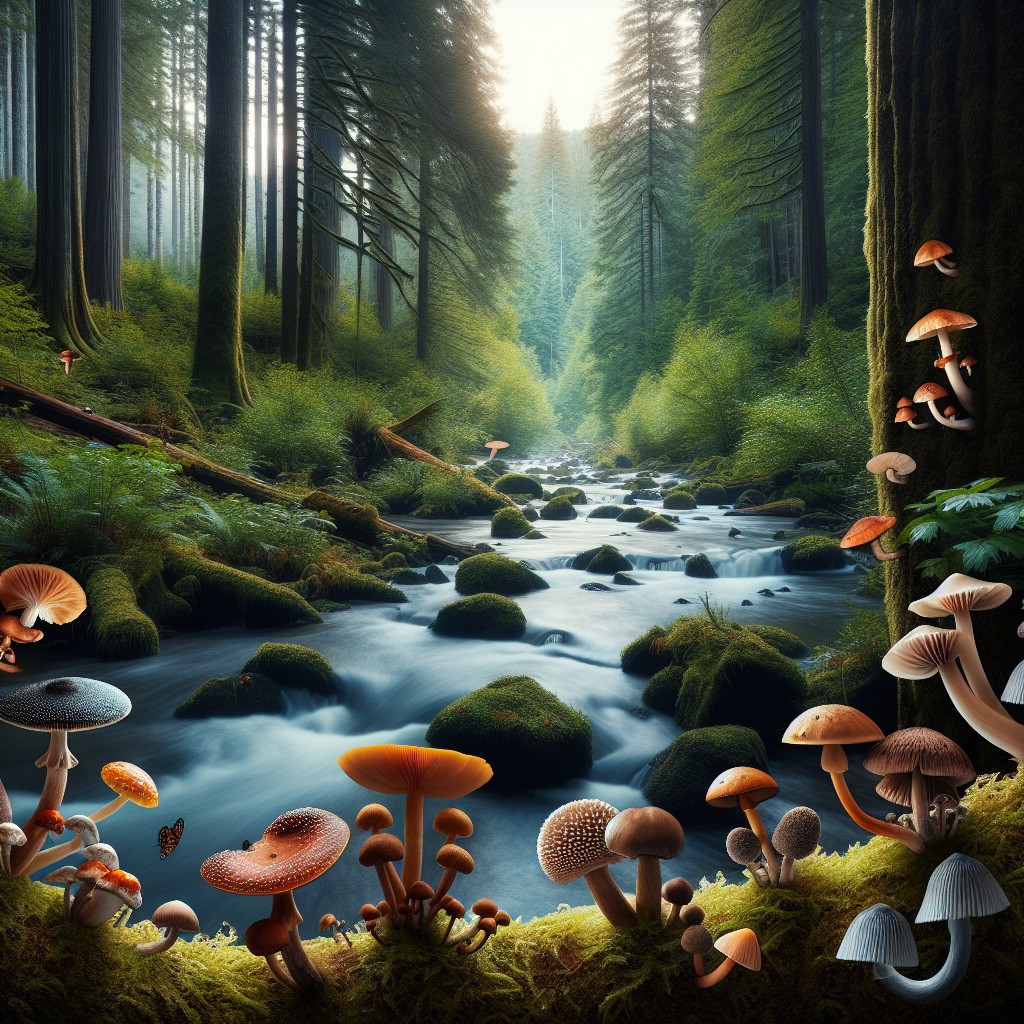Title: A Beginner’s Guide to Mushroom Identification in Oregon
Introduction
Welcome to the enchanting world of mushroom foraging in beautiful Oregon. Bedecked with pine-clad mountain peaks, scenic coastal byways, and sprawling deciduous canopy, Oregon has seen an increasing interest in mushroom hunting for its therapeutic and adventurous allure.
Understanding the Basics
When kicking off your wild mushroom hunt, it’s essential to understand a few basics. Differentiate between cap and stem, spore prints, gill attachment and the various shapes of mushrooms. It’s also beneficial to learn the common terminology related to mushroom structures like volva and universal veil, found on many Amanita mushrooms. Learning these basics will pave a clear path to both success and safety in Oregon’s mushroom-rich wilderness.
Top Mushroom Varieties in Oregon
One of the first things Oregon locals know is that mushroom diversity here is like nowhere else. The forests of the Pacific Northwest are home to a plethora of edible mushrooms like morels, chanterelles, and boletes.

Morels are one of the first edible fungi to appear in the Spring, particularly favored for their nutty flavor. Often found in forested areas recently cleared or burnt, as in the after-effects of forest fires, particularly in the central and southern cascades.
The Golden Chanterelle, Oregon’s state mushroom, can be discovered in late summer through fall. It typically thrives beneath Douglas firs throughout Tillamook Forest or the Mount Hood area. Recognizing their distinct orange hue, and wavy, lobed cap can help identify these prized edibles.
Last but not least, King Boletes, known for their meaty taste, can be found in late summer and fall. Look for them near Lodgepole Pine and Mountain Hemlock or visit Malheur National Forest in Eastern Oregon.
Safe Foraging Practices in Oregon
Now, here’s an essential piece of local advice – prioritize safety. Always practice the mushroomer’s golden rule: never consume anything unless you’re 100% sure of its identity. Carry a well-written local guidebook or use an app to help you with identification and make sure to cross-reference.
Moreover, remember to keep an eye out for wildlife. Many areas where you might find mushrooms are also home to Oregon’s abundant wildlife like bobcats and black bears. Avoid startling any wildlife you come across, especially during the berry seasons, and maintain a safe distance.
Lastly, if you’re considering heading to the coastal forests for a mushroom hunt, it’s worth knowing the weather can change quickly in the afternoon. Wear layers and carry rain gear.
Oregon Mushroom Foraging Laws and Ethics
Oregon is one of the best places for picking wild mushrooms due to hospitable foraging laws. Public lands like national forests allow you to collect up to a gallon of mushrooms per day for personal use. However, specific areas like Crater Lake National Park prohibit mushroom foraging.
Ensure you respect private property, picking only where you have permission. Practice good foraging etiquette by not overharvesting and trying not to harm the fungi’s mycelium when collecting.
Spotting Poisonous Varieties
Part of the mushroom foraging charm is the challenge it presents, yet one must also acknowledge the potential risks. Deadly mushrooms like Death Cap and Destroying Angels can be found in Oregon and mistakes can be severe. Keep clear of all white-gilled, little brown, and parasol-shaped mushrooms until you’re well-versed in identification.
Conclusion
Embarking on a mushroom foraging journey in Oregon can be an unforgettable experience. With the chorus of the coastal waves in the West, to the gentle rustle of leaves in the Cascade Range and the serene silence of high desert landscape in the East, don’t forget to pause and soak up what the Oregon wilderness has to offer.
With a bit of knowledge and a bucketful of caution, mushroom foraging can add an exciting element to your Oregon experience. Whether you’re catching a glimpse of the majestic Mount Jefferson on your hunt or crossing through the lush Tillamook Forest, each moment spent learning, identifying, and hunting for mushrooms is an opportunity to understand Oregon in a better, deeper way. Happy foraging!
